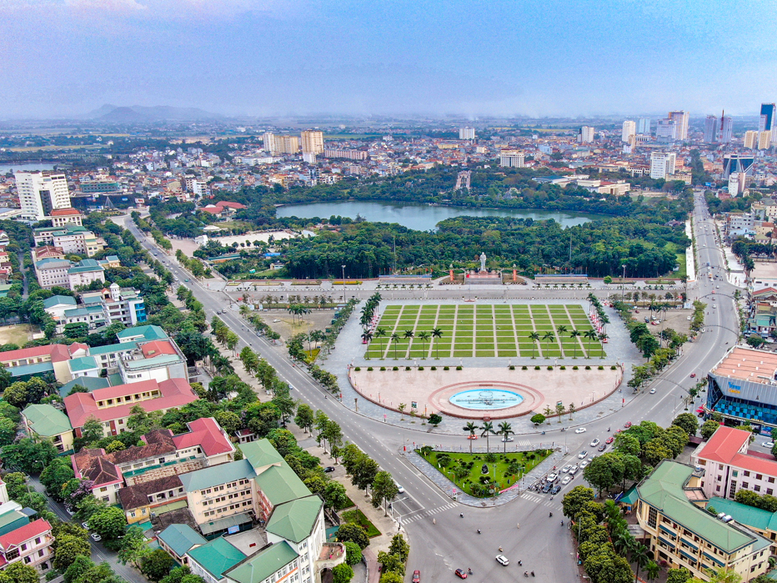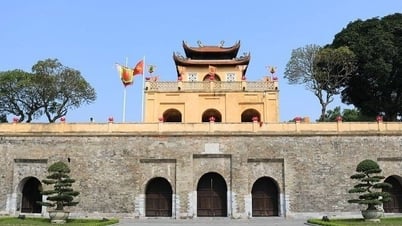
A corner of Vinh city, Nghe An province
According to Mr. Phan Trung Tuan, the Project to rearrange and reorganize administrative units at all levels and build a model of organizing a two-level local government submitted to the Central Government this time was carried out both urgently and very carefully, carefully considering all factors to ensure feasibility, aiming at the strategic goal of hundreds of years.
"Each criterion is very important and is considered carefully and thoroughly. The highest goal of the arrangement of administrative units that we propose to the competent authorities is to create a driving force for the country's development in the long term," said Mr. Phan Trung Tuan at the seminar "Arranging provinces and cities to create space for a hundred-year development strategy" organized by Dan Tri newspaper.
The Director of the Department of Local Government said that "expanding development space" is a very important criterion, but cannot be separated from geographical, cultural, security, defense, regional and inter-regional planning factors... as well as the requirement to build a streamlined, efficient, effective and efficient apparatus and build a government that is close to the people, serving the people better as directed by General Secretary To Lam.
Recalling the story of former Ha Nam Ninh Provincial Party Secretary Bui Xuan Son, who always thought about a day of reunion right from the time the province was separated 30 years ago, according to Mr. Tuan, that is also the thought of many people today.
Mr. Tuan analyzed that the separation or merger of administrative boundaries in each period is associated with specific characteristics and development conditions. 30 years ago, the policy of separating Ha Nam Ninh and many large provinces and cities at that time was due to the fact that the transport infrastructure, information technology, staff qualifications and the intellectual level of the people did not allow for effective management of such a large area.
However, at a certain stage, when conditions are very different from the past, from staff capacity, people's education level, technical infrastructure, technology, digital transformation to integration readiness, then merger is an inevitable step.
Furthermore, current reality shows that, along with strong development, many provinces and cities have very little room for development, especially in terms of land for production, business and investment attraction.
Typically, Da Nang City or Bac Ninh Province - localities that were once considered bright spots in attracting investment, now have gradually narrowed development space, with very little remaining land. Meanwhile, if it is possible to expand administrative boundaries, connecting with neighboring localities, new administrative units with larger scale and more abundant space will be formed, thereby creating new, strategic and long-term development space.
"The merger, therefore, is not just a simple adjustment of administrative boundaries, but also a sustainable development solution, opening up new space for planning, attracting investment and developing the economy and society in the future," Mr. Tuan stated his opinion.
At the same time, he emphasized that the arrangement, merger, and reorganization of administrative units at all levels, including the abolition of the district level this time, is in line with the current general trend in the world.
According to Mr. Tuan, in addition to the merged localities, in the plan that the Ministry of Home Affairs consulted and submitted to competent authorities for consideration, there are proposals for some provinces that will not be merged or rearranged this time.
Mr. Tuan gave the example of Nghe An and Thanh Hoa provinces. In addition to the natural area and large population, these two provinces possess potential factors and internal advantages that are large enough and clear enough to develop the localities and create momentum for the whole region.
"Nghe An and Thanh Hoa provinces are both located in the North Central region. These two provinces can be likened to 'Vietnam in miniature' with complete mountains, plains, coastal areas, borders, airports, seaports, roads, highways...", Mr. Tuan analyzed.
Thu Giang
Source: https://baochinhphu.vn/vi-sao-mot-so-tinh-thanh-khong-thuoc-dien-sap-nhap-102250411153426156.htm


![[Photo] Prime Minister Pham Minh Chinh receives Country Director of the World Bank Regional Office for Vietnam, Laos, Cambodia](https://vphoto.vietnam.vn/thumb/1200x675/vietnam/resource/IMAGE/2025/5/15/2c7898852fa74a67a7d39e601e287d48)


![[Photo] President Luong Cuong attends the National Ceremony to honor Uncle Ho's Good Children](https://vphoto.vietnam.vn/thumb/1200x675/vietnam/resource/IMAGE/2025/5/15/9defa1e6e3e743f59a79f667b0b6b3db)
![[Photo] In May, lotus flowers bloom in President Ho Chi Minh's hometown](https://vphoto.vietnam.vn/thumb/1200x675/vietnam/resource/IMAGE/2025/5/15/aed19c8fa5ef410ea0099d9ecf34d2ad)


















































































Comment (0)